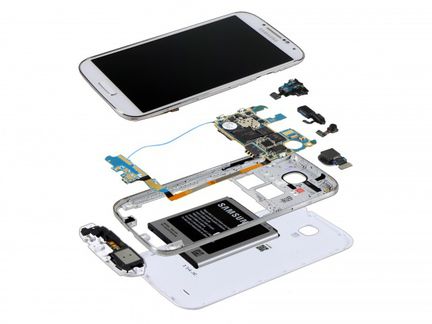firm IHS was conducted as usual a first analysis of the BOM (Bill Of Materials) or list of components, by estimating at $ 244 for the Samsung Galaxy S IV 16 GB to its announcement in March 2013.
Having now had the opportunity to reverse the smartphone, it refines its estimate by reducing it to $ 237 (parts and assembly), not including the cost of logistics, license fees, marketing and other items necessary for give life to the reference terminal of the Korean group that hopes to sell tens of millions of copies by offering a bare price of more than € 600.
237 dollars is more than the cost of the BOM of iPhone 5 16 GB which was estimated in September last year to about $ 205. Unsurprisingly, IHS confirms that the Korean group has used many components it has itself produced through its activity semiconductor manufacturer.
The firm notes that the Snapdragon processor 600 Qualcomm that runs a version of the Galaxy S IV costs 20 dollars when processor Exynos 5 Octa produced by Samsung a cost of $ 28.
Samsung representatives had indicated that the choice of using multiple processors was only a matter of availability of necessary volumes and variants showed comparable performance, even if the benchmarks are trying to give a little edge to ‘Exynos 5 Octa (but can also mean a shorter battery life).

IHS noted that the U.S. versions in use 600 Snapdragon chip graphics processing provided by Fujitsu, which is not present in the Korean versions in Exynos 5 Octa. Off debate on the internal memory already busy when unpacking the device, the memory device 16 GB is $ 28 on the entire BOM.
outside components from Samsung, IHS believes that several elements regardless of origin, as the camera sensor brand are also produced by the Korean group within its Galaxy S IV, which leaves little space for suppliers third.
The firm notes that Broadcom has provided wireless connectivity WiFi and Bluetooth, Maxim component of energy management and some Triquint Semiconductor chips for wireless communication.
No comments:
Post a Comment